
The Atlantic Ocean is the second-largest of the world's five oceanic divisions, with an area of about 85,133,000 km2 (32,870,000 sq mi). It covers approximately 17% of Earth's surface and about 24% of its water surface area. During the Age of Discovery, it was known for separating the New World of the Americas from the Old World of Afro-Eurasia.

The Caribbean Sea is a sea of the Atlantic Ocean in the tropics of the Western Hemisphere. It is bounded by Mexico and Central America to the west and southwest, to the north by the Greater Antilles starting with Cuba, to the east by the Lesser Antilles, and to the south by the northern coast of South America. The Gulf of Mexico lies to the northwest. The entire Caribbean Sea area, the numerous islands of the West Indies, and adjacent mainland coastal regions are collectively known as the Caribbean.

An ocean current is a continuous, directed movement of seawater generated by a number of forces acting upon the water, including wind, the Coriolis effect, breaking waves, cabbeling, and temperature and salinity differences. Depth contours, shoreline configurations, and interactions with other currents influence a current's direction and strength. Ocean currents are primarily horizontal water movements.

Marine Atlantic Inc. is an independent Canadian federal Crown corporation which is mandated to operate ferry services between the provinces of Newfoundland and Labrador and Nova Scotia.
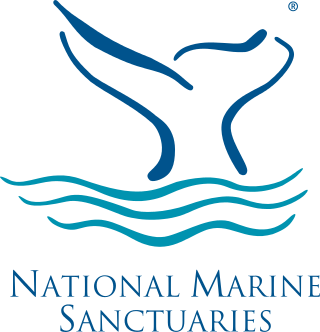
A U.S. National Marine Sanctuary is a zone within United States waters where the marine environment enjoys special protection. The program was established in 1972 by the Marine Protection, Research, and Sanctuaries Act and is currently administered by the National Ocean Service through the National Marine Sanctuaries Act (NMSA).

The United States Fleet Marine Forces (FMF) are combined general- and special-purpose forces within the United States Department of the Navy that perform offensive amphibious or expeditionary warfare and defensive maritime employment. The Fleet Marine Forces provide the National Command Authority (NCA) with a responsive force that can conduct operations in any spectrum of conflict around the globe.

The Atlantic States Marine Fisheries Commission (ASMFC) is a commission of U.S. states formed to coordinate and manage fishery resources—including marine (saltwater) fish, shellfish, and anadromous fish —along the Atlantic coast of the United States.

The Tropical Atlantic realm is one of twelve marine realms that cover the world's coastal seas and continental shelves.
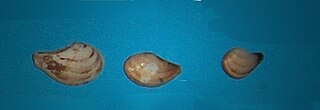
Nuculanidae is a family of small saltwater clams, marine bivalve molluscs in the order Nuculanida. Species in this family are found in all seas, from shallow to deep water.

The following outline is provided as an overview of and introduction to Oceanography.
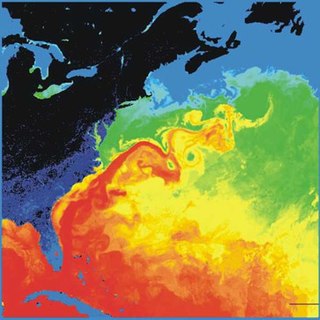
The Gulf Stream is a warm and swift Atlantic ocean current that originates in the Gulf of Mexico and flows through the Straits of Florida and up the eastern coastline of the United States, then veers east near 36°N latitude and moves toward Northwest Europe as the North Atlantic Current. The process of western intensification causes the Gulf Stream to be a northward-accelerating current off the east coast of North America. Around 40°0′N30°0′W, it splits in two, with the northern stream, the North Atlantic Drift, crossing to Northern Europe and the southern stream, the Canary Current, recirculating off West Africa.
Nuculana acuta, or the pointed nut clam, is a marine bivalve mollusc in the family Nuculanidae. It can be found along the Atlantic coast of North America, ranging from Massachusetts to Texas, including the West Indies.
Nuculana concentrica, or the Concentric nut clam, is a marine bivalve mollusc in the family Nuculanidae. It can be found in the waters of the Gulf of Mexico, ranging from Texas to Florida.

Nuculana pernula, or Müller's nut clam, is a marine bivalve mollusc in the family Nuculanidae. It can be found along the Atlantic coast of North America, ranging from Massachusetts to Greenland.

Nuculana tenuisulcata, or the Sulcate nut clam, is a marine bivalve mollusc in the family Nuculanidae. It can be found along the Atlantic coast of North America, ranging from the Gulf of St. Lawrence to Rhode Island.
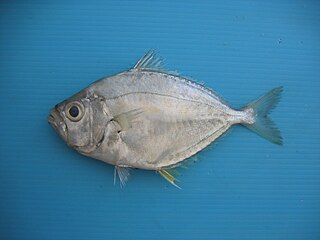
Gazza minuta, the toothpony or toothed ponyfish, is a species of marine ray-finned fish, a ponyfish from the family Leiognathidae. It is found in the Indo-Pacific from the Red Sea and the east African coast east through the Indian and Pacific Oceans to Australia and Tahiti north as far as the Ryukyu Islands. It occurs over sandy and silty bottoms, although the young prefer mangroves and silty reefs. it feeds using its protruding pipette-like mouth or using the gill rakers as seives. Its food consists of smaller fishes, crustaceans and polychaetes.
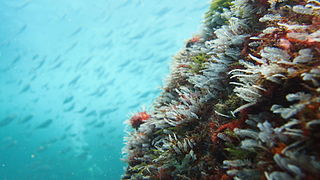
Temperate South America is a biogeographic region of the Earth's seas, comprising the temperate and subtropical waters of South America, including both the Pacific and Atlantic coasts of the continent and adjacent islands. It also includes the remote Gough Island and Tristan da Cunha in the South Atlantic Ocean.

Nuculana is a genus of bivalves in the family Nuculanidae. It includes the following species:

Saccella is a genus of bivalves belonging to the family Nuculanidae.
















